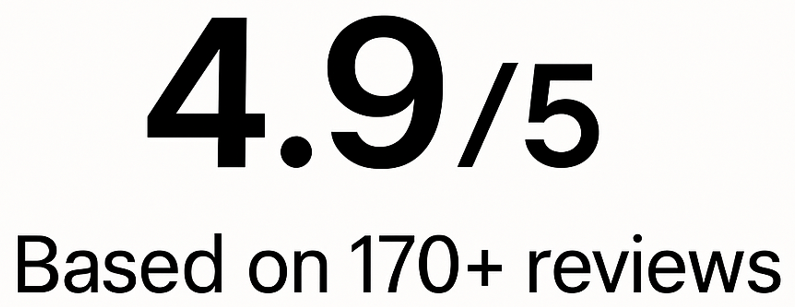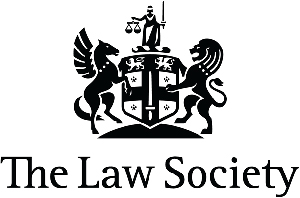Key Takeaways
- A statutory demand for payment in the UK is a formal legal notice requiring the payment of an undisputed debt and is a powerful initial step in debt recovery.
- Minimum threshold: £750 for companies and £5,000 for individuals, as set out under the Insolvency Act 1986.
- Creditors must serve statutory demands in strict accordance with defined legal procedures, either personally or by first-class post.
- Ignoring a statutory demand can lead to insolvency action, risking a company’s winding up or an individual’s bankruptcy.
- Debtors have 18 days to apply to set aside a statutory demand after service, and 21 days to settle, after which insolvency proceedings may start.
- Serving a statutory demand without meeting legal requirements or for a disputed debt risks court sanctions, costs orders, and claims for abuse of process.
- Unlike a court judgment, a statutory demand achieves practical, fast results in undisputed cases but must be for a liquidated, due sum.
- Instructing experienced lawyers helps ensure compliance with the Insolvency Act, minimising costly errors and strengthening your debt recovery position.
- We are rated “Excellent” on Trustpilot by over 130 clients with a 4.9/5 score.
- Taking expert legal advice from our statutory demand solicitors maximises your prospects of recovery while protecting your business reputation.
What Is the Legal Threshold for Serving a Statutory Demand for Payment in the UK?
Creditors can initiate insolvency proceedings against a debtor if a company owes £750 or more, or if an individual owes £5,000 or more. A statutory demand for payment in the UK is often the fastest route to recovering undisputed debts, but a misstep in the process can invalidate your demand and leave you liable for costs.
Our specialist litigation solicitors provide clear, practical advice to help you navigate the statutory demand for payment UK process, ensuring your claim qualifies and all procedural rules are met. If you need prompt, effective recovery on an undisputed debt, contact our team for a Free Consultation.
What Is a Statutory Demand for Payment in the UK?
A statutory demand for payment is a formal notice served by a creditor requiring payment of a specific, due, undisputed debt. Governed by the Insolvency Act 1986 and Insolvency Rules 2016, this is not a simple payment reminder; it is a legal device that, if ignored, may prove the debtor’s insolvency and enable insolvency proceedings.
A statutory demand is suitable only for clear, liquidated, and due debts. Using it for a genuinely disputed or future debt can leave the creditor exposed to cost penalties and adverse court orders.
Understanding whether your claim meets the statutory thresholds is the first step to successful use of this procedure.
Minimum Debt Threshold for Statutory Demand in England & Wales
The minimum thresholds are as follows:
- Individuals: At least £5,000, per section 267(4) Insolvency Act 1986.
- Companies: At least £750, per section 123(1)(a) Insolvency Act 1986.
Small debts below these levels cannot proceed via statutory demand-based insolvency. However, claims for smaller sums can still be brought in the county court.
If your debt qualifies, it is crucial to follow every procedural requirement precisely to avoid costly setbacks.
Steps in the Debt Recovery Statutory Demand Process
The standard procedure for serving a statutory demand includes:
- Confirm the Debt: Ensure the debt is due, over the threshold, and genuinely undisputed.
- Prepare the Paperwork: Use the prescribed Insolvency Rules 2016 form (SD1 for individuals, SD2 for companies, SD3 for partnerships).
- Gather Evidence: Collect contracts, invoices, payment records, and any proof supporting your position.
- Serve the Demand: Deliver it using valid methods (outlined below).
- Monitor Deadlines: Note the 21-day payment period and 18-day set aside window for individuals.
- Next Steps: If no settlement or challenge, proceed to insolvency proceedings.
Solid evidence and robust paperwork are your first lines of defence if the demand is challenged.
Legal Requirements for Serving a Statutory Demand
Serving a statutory demand requires strict compliance with legal requirements. Failing to serve the demand properly is a common cause of process failure.
- Individuals: Service should usually be personal (handed to the debtor), but can be posted to the last known address if personal service proves impractical.
- Companies: Service is valid if delivered by hand or first-class post to the registered office.
You must use the correct statutory demand form for the debtor type and include all prescribed details and evidence.
Rules for Personal Service and First-Class Post
- Personal Service (Individuals): Hand delivery at their address.
- First-Class Post (Companies): Delivery to the registered office address.
If direct service is not possible, alternative methods, such as leaving the demand at the debtor’s last known address, may be used only after taking reasonable steps to serve personally.
A validly served demand clears the path for insolvency proceedings if unpaid, but even small errors can ruin your case.
Common Mistakes That Invalidate Statutory Demands
The following mistakes are frequently fatal to debt recovery statutory demands:
- Serving using an incorrect method (for example, only by email).
- Using the wrong statutory demand form.
- Failing to enclose supporting documentation.
- Omitting statutory wording or required information.
- Incorrect calculation of the amount (excluding interest or failing to evidence contractual charges).
After valid service, a debtor’s options and deadlines become highly time sensitive.
What Happens If a Statutory Demand Is Ignored?
If a debtor ignores a statutory demand and takes no action within 21 days, the law presumes the debtor is unable to pay their debts. This allows the creditor to issue a bankruptcy petition (for individuals) or a winding-up petition (for companies).
Missing deadlines exposes the debtor to rapid insolvency action, with potentially devastating consequences.
How Long Does a Debtor Have to Respond to a Statutory Demand?
There are two critical deadlines for debtors:
- 21 days: To pay, reach settlement, or risk insolvency action.
- 18 days (individuals): To apply to court to set aside the demand under rule 10.4 of the Insolvency Rules 2016. Late applications are rarely accepted.
Once the 21 days elapse, creditors can immediately start insolvency proceedings, provided the demand was properly served and the debt remains unpaid.
Knowing the valid grounds for challenge is crucial for any debtor served with a demand.
Grounds for Setting Aside a Statutory Demand
Debtors may apply to set aside a statutory demand on the following grounds:
- The existence of a genuine and substantial dispute about the debt.
- A counterclaim or set-off that equals or exceeds the sum demanded.
- Technical defects or errors in the demand’s form or service.
- The debt is not yet due or is conditional on future events.
- The process is being misused (abuse of process).
It’s critical the statutory demand process is reserved for clear, undisputed debts to avoid unnecessary litigation risk.
Statutory Demand vs. Court Judgment: What Is the Difference?
A statutory demand is a formal tool signalling impending insolvency if an undisputed debt remains unpaid. It does not result in an enforceable judgment but allows insolvency petitions to be filed if the debtor does not respond.
By contrast, a County Court Judgment (CCJ) is an enforceable order from a court, enabling the creditor to instruct bailiffs, secure charging orders, or attach earnings.
Statutory Demand Pros:
- Fast-track leverage against undisputed, due debts.
- Often triggers quick settlement because of insolvency risk.
Statutory Demand Cons:
- Risky if the debt is disputed—abuse of process can lead to penalties.
- Does not directly recover money; only paves way for insolvency proceedings.
CCJ Pros:
- Suitable for disputed debts and complex claims.
- Enforceable via court bailiffs if unpaid.
CCJ Cons:
- Slower to obtain—a hearing is usually necessary.
- Debtor may delay or appeal.
Selecting the correct route requires a clear view of your claim and strategic objectives. Our lawyers can advise on which method will achieve the best and quickest outcome for your business.
Key Risks and Legal Pitfalls for Creditors
Creditors must be aware of significant risks associated with statutory demands, including:
- Using the process for disputed debts, which can constitute abuse of process and attract cost sanctions.
- Technical flaws in service or paperwork that render demands unenforceable.
- Reputational harm if demands are advertised or made public during insolvency proceedings.
- Loss of negotiating leverage if your initial action fails.
Speak to our expert litigation lawyers before you act to ensure that your statutory demand stands up to scrutiny.
Laws and Deadlines Governing Statutory Demands in the UK
The key legal framework includes:
Insolvency Act 1986
- Sets the minimum thresholds for both companies and individuals.
- Lays out grounds for insolvency proceedings following an unanswered statutory demand.
Insolvency Rules 2016
- Prescribe mandatory forms (SD1–SD3).
- Set procedural rules for service and evidence.
- Mandate specific time limits for response and challenge.
Core Statutory Deadlines
| Step | Deadline |
|---|---|
| Payment or settlement | 21 days from date of service |
| Set aside application (individual) | 18 days from date of service |
| Insolvency petition filing | Commences after 21 days |
Missing deadlines can result in loss of statutory rights and accelerate insolvency consequences. Our solicitors ensure every timeline is monitored and strategically managed.
What Do the Courts Say About Statutory Demands?
Courts enforce strict procedural compliance and discourage misuse. Relevant decisions include:
| Case | Facts | Outcome | Key Point |
|---|---|---|---|
| Re a Company (No 0012209 of 1991) [1992] | Demand on a genuinely disputed debt | Demand set aside | Statutory demands only for clear, undisputed debts |
| Angel Group Ltd v Davey [2019] EWCA Civ 1091 | Technical fault in serving a demand | Demand dismissed | Correct service is a strict requirement |
| HMRC v Rochdale Drinks Distributors Ltd [2011] EWCA Civ 116 | Attempted adjournment due to active dispute | Set aside granted | Serious disputes justify resisting a demand |
These cases emphasise the importance of using the process only for undisputed sums and with strict compliance to procedure.
Statutory Demand or Court Judgment: Which Strategy Is Right?
Choosing between a statutory demand for payment UK and a CCJ depends on:
- The nature of the debt (disputed or undisputed)
- Required speed of recovery
- Risk appetite regarding adverse costs
- The debtor’s likely response
Not sure which route to take? Our specialist lawyers provide a clear, strategic assessment based on your debt and your business objectives.
Next Steps After an Unpaid Statutory Demand
If a statutory demand is unpaid after 21 days, the creditor can:
- Petition for a winding-up order against a company (debt over £750).
- Present a bankruptcy petition against an individual (debt over £5,000).
These insolvency proceedings are serious, public, and can severely damage a debtor’s business and credit profile. Fixed court fees, deposits, and potential lost costs mean this is not a step to be taken lightly.
Our solicitors provide full, start-to-finish representation in both bankruptcy and winding-up processes.
Why Work With Solicitors for Statutory Demands?
Serving a statutory demand is a technical legal process with no margin for error. Our lawyers:
- Ensure your debt qualifies and advise on risk exposure.
- Draft the demand, attaching all necessary supporting evidence.
- Serve in accordance with strict rules, guaranteeing proof of service.
- Monitor deadlines and respond swiftly to any debtor defence or challenge.
- Advise on negotiation, mediation, and litigation where required.
- Protect your business from accusations of process abuse and cost penalties.
Our Approach to Statutory Demand for Payment UK
We have developed an unmatched, results-driven approach grounded in proven legal success:
- Recognised in the legal press for technical excellence and innovation.
- High Court-tested demand templates and document workflows.
- Go Transfer portal for secure documents and live updates.
- Digital-first engagement—WhatsApp, Google integration, and real-time support.
- Negotiation strategies to unlock the fastest cashflow outcome.
- No-win-no-fee funding for qualifying high-value claims.
Clients benefit from maximum leverage, fast resolution, and world-class service standards.
Frequently Asked Questions
Can a statutory demand be used for multiple unpaid invoices?
Yes, provided each invoice is due, undisputed, and the total meets the threshold (£5,000 for individuals, £750 for companies). List all debts and evidence within the demand.
What if the debtor claims the invoices are disputed after service?
If the debtor raises a bona fide dispute within 18 days (for individuals), they may apply to set aside the demand. Creditors should be ready with comprehensive evidence.
Is a statutory demand enforceable for costs, interest, or late payment fees?
Yes, if these amounts are contractually agreed and can be proven. Itemise principal, interest, and costs distinctly.
Can I serve a statutory demand outside the UK?
International service is possible only in limited circumstances and often requires court approval. Always seek specialist advice.
What happens if a statutory demand is served to the wrong address?
Service at an incorrect address can invalidate the demand. Confirm and document all address checks before service.
Do I need to instruct a solicitor to prepare and serve a statutory demand?
It is not strictly necessary, but solicitor involvement significantly reduces risk and increases success, especially in substantial or complex debts.
Can a company defend a statutory demand differently to an individual?
Principles are similar, but the technical response differs. Companies can seek an injunction or file evidence of dispute.
Will a statutory demand affect my company’s reputation or credit record?
Not directly, but a winding-up petition is a public record and will impact the company’s credit profile and standings.
Can a statutory demand be withdrawn after it’s been served?
Yes, you may withdraw at any time before a petition is filed. Always withdraw in writing with a full record.
How do I respond if I receive a counterclaim or defence to my demand?
Reply promptly, assess the merits, and always engage legal advice to determine best next steps, including negotiation or mediation.
Speak to Our Statutory Demand Solicitors Today
Statutory demands offer a powerful, rapid solution to recover undisputed debts in England and Wales. With strict rules, hard deadlines, and high legal stakes, using specialist solicitors ensures your demand is legally robust, your risks are minimised, and your prospects of fast recovery are maximised.
Our experienced team has helped hundreds of clients with statutory demands, safeguarding against errors and enforcing rapid settlements. For clear guidance or urgent action, call us directly or schedule a Free Consultation.

































